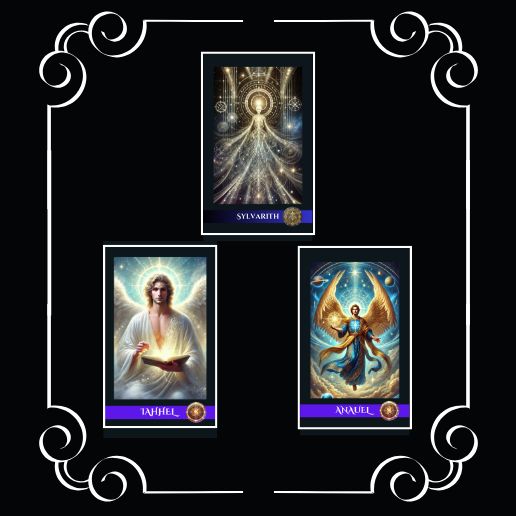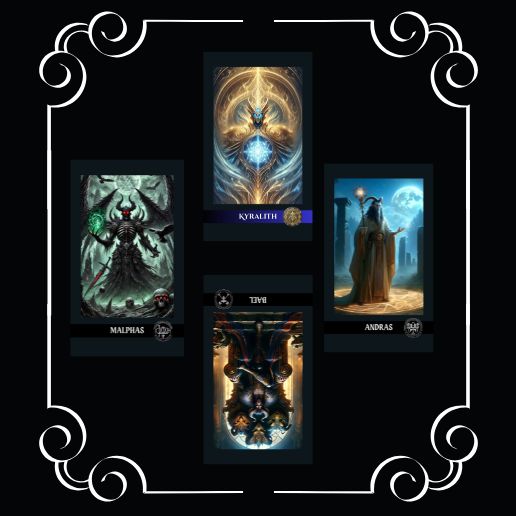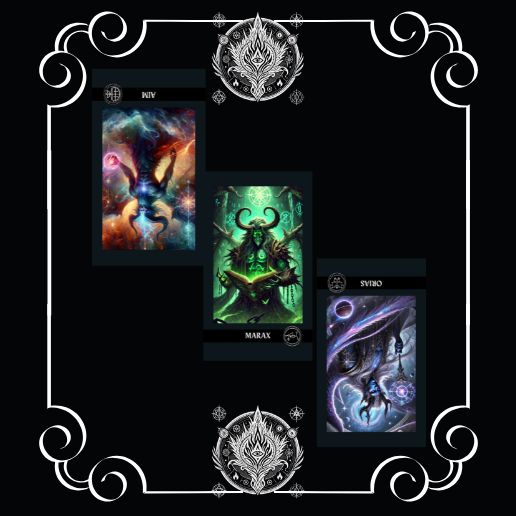Tarot Tables: Sacred Altars of Intuition and Insight
In the mystical world of tarot reading, where symbolism, intuition, and archetypal wisdom intertwine, the surface upon which the cards are laid holds more significance than one might expect. A Tarot Table is not merely a piece of furniture—it is a ritual space, an energetic anchor, and an extension of the reader’s spiritual practice. Whether simple or ornate, portable or permanently set up, tarot tables play a vital role in shaping the energetic and aesthetic environment in which divination unfolds.
More Than a Surface: The Symbolic Function
The tarot table serves as the threshold between the mundane and the mystical. It represents the physical manifestation of the reader’s intent to bridge the seen and unseen. Just as altars in religious and magical practices serve as centers of sacred energy, the tarot table becomes a portal of insight, where symbols are laid out and interpreted to reveal patterns, warnings, hopes, and hidden truths.
In some traditions, the table is consecrated and anointed with oils or herbs to align it with the elements—earth (the physical table), air (the spoken question), fire (the candlelight), water (a cup or bowl for emotion), and spirit (the intention of the reader). This transforms a mundane piece of furniture into a living altar for guidance and revelation.
Choosing the Right Table: Practical and Aesthetic Considerations
There is no single “right” tarot table. What matters is that it resonates with the reader’s energy and creates an atmosphere of focus, reverence, and openness. Some readers prefer antique tables with ornate carvings and symbolic motifs, lending gravitas and tradition to their practice. Others choose minimalist surfaces to emphasize clarity and modernity.
Key considerations include:
- Size: The table must be large enough to comfortably accommodate the card spread being used. For example, a Celtic Cross spread requires more space than a simple three-card draw.
- Height: Ideally, the table should allow the reader to sit comfortably without strain. For standing rituals or group sessions, a taller table may be preferable.
- Surface Texture: A flat, clean surface ensures cards can be easily shuffled and laid without interference.
- Portability: For traveling readers or outdoor rituals, foldable or collapsible tables can be essential.
The physical qualities of the table are not merely utilitarian—they influence the flow of the reading. A cluttered or unstable table can disrupt concentration, while a carefully curated surface enhances ritual presence and spiritual immersion.
Tarot Cloths: The Companion to the Table
Rarely does a tarot reader use a bare table. Most adorn it with a tarot cloth, chosen with intention and symbolism. These cloths protect the cards from dirt or damage, but more importantly, they sanctify the space. Cloths may be embroidered with zodiac signs, elemental symbols, moon phases, or sacred geometry—each adding a layer of meaning to the session.
Some readers use different cloths depending on the type of question being asked—black velvet for shadow work, golden silk for abundance readings, white linen for purity and clarity. The synergy between the cloth and the table helps establish the energetic boundaries of the reading, keeping the space protected and focused.
Personalization: Creating a Ritual Space
Over time, a tarot table becomes deeply personal. It absorbs the reader’s energy, frequency, and sacred habits. Many practitioners decorate their tables with crystals, candles, incense holders, figurines, or talismans. These items are not mere decoration—they form part of the ritual and reinforce specific intentions.
For instance:
- Amethyst can enhance intuition.
- Black tourmaline may serve to protect the space from unwanted influences.
- A white candle might be lit to invite clarity.
- A small bowl of water may represent emotional insight or spiritual cleansing.
Some readers place a mirror on or behind the table to reflect energy, symbolizing the reflective nature of the reading. Others arrange their decks in specific formations, creating a sacred geometry of intuition.
Historical Roots and Cultural Practices
The tradition of setting apart a dedicated surface for divination goes back centuries. In medieval Europe, diviners and mystics often worked at ritual tables carved with planetary or astrological symbols. In some cultures, the floor itself serves as the “table,” with cloths spread out in circular patterns, symbolizing the wheel of life or the seasons.
In ceremonial magic, the “table of practice” is used in invocation and communication with spirits, often surrounded by protective circles or inscriptions. In this context, the tarot table can also be seen as a magical device—a liminal zone governed by ritual law and intention.
In modern Western occultism, particularly within traditions such as Hermetic Qabalah or Thelema, tarot reading is considered a form of pathworking and scrying, and thus the table becomes a gateway to archetypal forces. Each card laid on the table is not just an image—it is a sigil, a portal, a symbolic flame.
The Reader and the Table: A Relationship of Power
Just as a sword is an extension of the warrior’s will, the tarot table becomes an extension of the reader’s spiritual authority and attunement. With repeated use, the table becomes “charged,” developing a subtle resonance that helps the reader slip more quickly into intuitive states. It is not uncommon for long-time practitioners to speak of their tarot table as an ally or familiar—a silent partner in the act of divination.
When working with clients, the presence of a ritual table creates a sense of trust and gravity. It conveys that the reading is not casual entertainment, but a sincere act of listening, perceiving, and unveiling. The table provides structure to the intangible, giving form to the intuitive.
The Portable Tarot Table: Modern Adaptations
For readers who travel, attend festivals, or offer sessions in different locations, the modern tarot table has evolved into portable forms. These include:
- Foldable altar tables
- Custom wooden boxes that open into flat reading surfaces
- Cloths printed with layout guides or symbolic borders
Even in pop-up spaces, the ritual of unfolding the cloth, placing the deck, and lighting a small candle can recreate the sacred atmosphere of a permanent table. The ritualization of space, even in motion, preserves the integrity of the reading.
Creating Your Own Tarot Table: A Guided Practice
If you’re looking to create your own tarot table, consider these steps:
- Choose your surface with care. It can be a small side table, a desk, or a dedicated piece you feel drawn to.
- Cleanse it energetically with sage, sound, salt, or prayer.
- Choose a tarot cloth that reflects your intention or energy.
- Add sacred items like crystals, candles, incense, or meaningful symbols.
- Dedicate the table with a simple ritual. Speak aloud your intent: “This is a space of clarity, truth, and connection. May all readings here be for the highest good.”
- Use the table regularly, allowing it to become a trusted part of your spiritual ecosystem.
A Portal to the Inner World
Ultimately, the tarot table is more than an object—it is a portal to the subconscious, a stage for archetypes, and a container for transformation. It holds the cards not only in physical form, but in symbolic alignment, letting the reader access layers of meaning that transcend logic.
Whether you’re a professional reader, a student of the tarot, or someone drawn to the mystical arts, a well-prepared tarot table invites depth, stillness, and revelation. In a chaotic world, it offers a stable island where questions can be asked, symbols can speak, and intuition can flow like a sacred river.
The Best and Functional Tarot Tables
Oracle of Celestial Health: Angelic & Elenthos Insights
Tarot & Oracle: Relationship Energy Unveiled
Reading for Luck, Gambling, and Lottery
Shadow Work Reading: Confront the Inner Demons
The Demon Path – A Seven-Card Spread
Last update on 2025-09-22 / Affiliate links / Images from Amazon Product Advertising API













